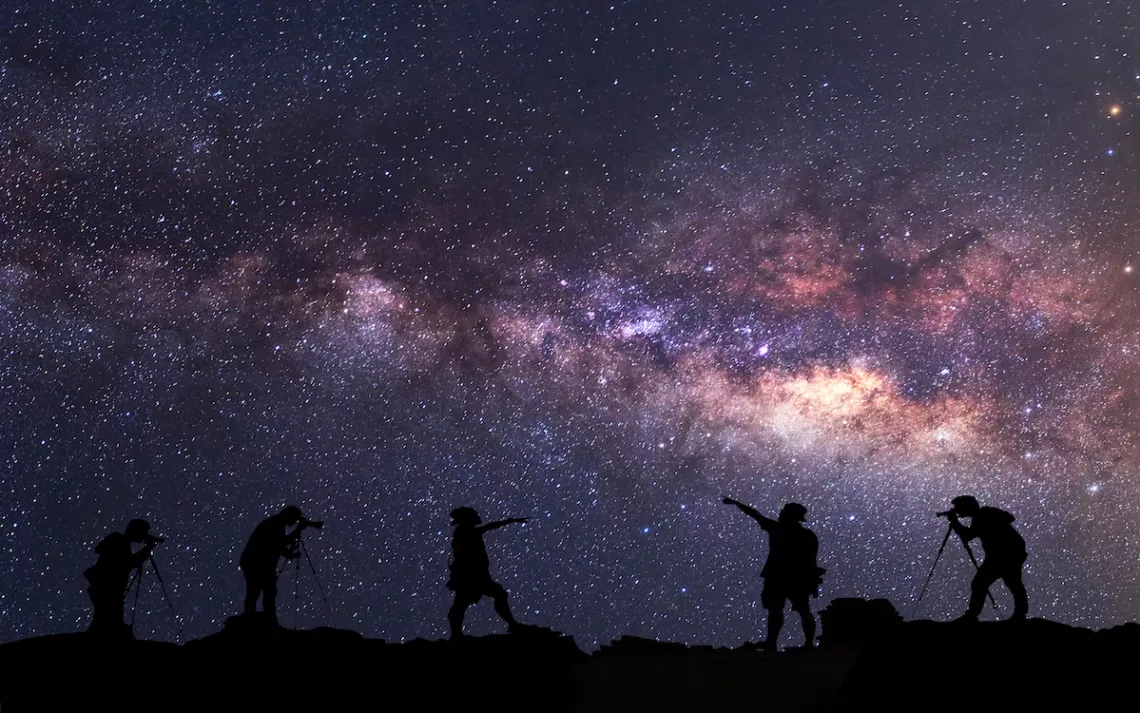July Observing Highlights: Streaks of Light and the Heart of the Milky Way
Take some time on warm evenings to explore the Milky Way or catch a falling star

Photo by Narathip12/iStock
Astronomically speaking, August steals the show this summer, with a total eclipse on the 21st that will cut a narrow path across the United States from the Pacific to the Atlantic.
But July is not without its own astronomical highlights to enjoy. We reach aphelion on July 3, which is the farthest point in Earth’s orbit from the sun, but the tilt of the Earth on its axis means the weather is warm and our days are long, so settle into a deck chair to observe the night sky.
Toward the end of the month, you’ll have a chance to spot meteors from the Delta Aquariid meteor shower, which peaks on July 28/29 with about 20 meteors per hour. Earth will be passing through the dust left behind by Comet Machholz when it traveled through the inner solar system. As this dust strikes our atmosphere, it burns up and creates the shower.
Midsummer nights are the best time to observe the central part of our Milky Way, which lies near the southern horizon. The constellations Scorpius and Sagittarius reside here and hold thick star clouds and plenty of nebulae and clusters that can be seen through binoculars or a telescope. Only in the summertime do we have such a good view of the dense heart of our galaxy.
At the end of July, you’ll have a chance to spot Mercury. Find it in the west after sunset near the horizon with the star Regulus in Leo close by. Mercury is brighter, shining at .5 magnitude, and Regulus is magnitude 1.4. On July 24 and 25, Mercury and Regulus are about a degree apart with a crescent moon floating nearby, making for a scenic view.
July’s full moon occurs on July 8 for most of the United States and just after midnight on the 9th in the eastern time zone. New moon, which delivers the darkest skies, is on July 23. The moon gets quite near the easy-to-observe giant planets, Jupiter and Saturn, this month. On July 6, the moon is just above Saturn and the pair float in front of the Milky Way. July 28 finds the moon just above Jupiter.
 The Magazine of The Sierra Club
The Magazine of The Sierra Club



